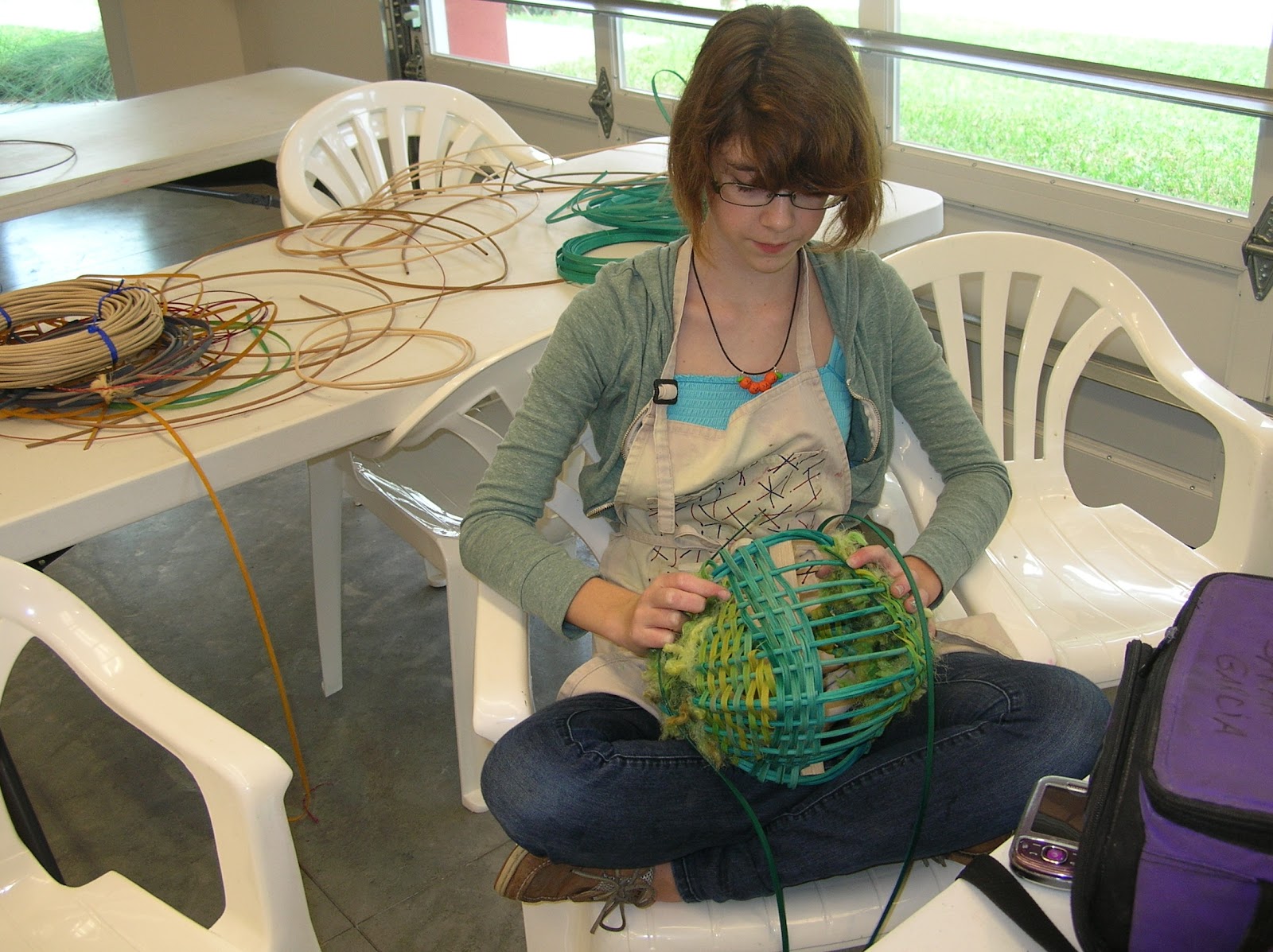Tuesday, August 20, 2013
Tuesday, August 13, 2013
Designing Textiles with Nature's Palette
The Colors of Nature or Printing and Dying with Florida plants.
In this six week class:
Learn to dye and print beautiful fabrics and yarns with
materials right in your back yard and kitchen, and how to capture the exquisite
marks of nature by employing her processes.
You will explore ancient dyes and dye
methods such as setting up and dying with an organic indigo vat, dying cochineal insects. The use and obtaining of various “mordents” to alter color and impart color fastness will be demystified . A large portion of the class will be
devoted to helping you discover the more exciting and eco-friendly methods
making your own dyes, inks and prints with plants that are locally available. You will also be introduced to “rust” "compost and fermentation mesthods.
Silk scarf printed with chaste tree leaves and hibiscus. Various wool and mohair dyed with a variety
of common Florida plants.

Samples of " direct contact printing" (a method inspired by the work of India Flint) using two different mordants. Left alum+cream of tartar+iron Right alum+cream of tartar.


Wool and silk printed with eucalyptus leaves and dyed with pecan hulls.
Botanical printed paper. Left pecan leaves curcumin roots on the Right chaste tree leaves with hibiscus flowers.
Left a student printed silk with annato seeds and dipped the edges into the indigo vat.. Right another sutdent's experiment with pecan hulls on silk.
Or try a One Day Workshop:
Where you will learn how to extract dyes and prints from plants that are in your own yard and capture the essence of nature on paper, wool, silk and other fabrics. You will leave this workshop with enough information and hands on experience to get you started in the fascinating craft of natural dying and printing.
Botanical Printed Art paper.
Subscribe to:
Comments (Atom)



















































